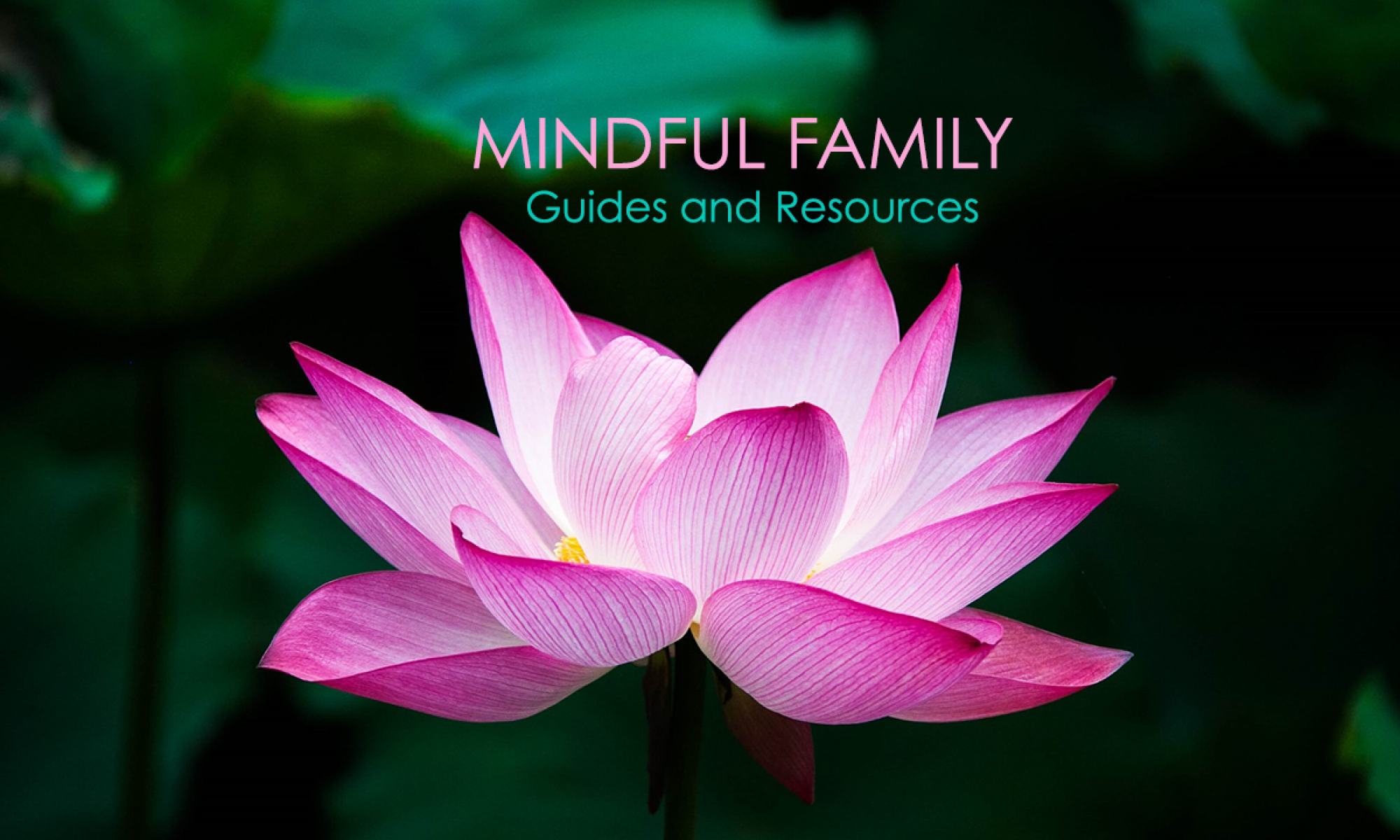by Chelsea Reimer
Mindfulness in Dying: A Guide for Individuals and Families
As much as it may pain us to think of it, dying happens to every one of us. Contemplating death, our own or of those that we love, can bring up intense emotions. These feelings may be so powerful and overwhelming that we turn away from them. Perhaps, you were taught from a very young age that talking about death was taboo, or you feel as if the topic of death is simply too morbid or depressing to bring up with your loved ones. You are not alone – these feelings are very common within our culture.

So why are we so afraid to think about death? What if, by exploring some of the big questions as death nears, we could create space for the feelings that arise? What can we learn about ourselves and our relationships with those we love? We encourage you to use this guide to explore your own feelings about death and dying and to help discover what it means for you to have a good death.
What is mindfulness?
The word mindfulness is an English translation of the Pali word sati, a word that signifies awareness and attention. Pali was the language of Buddhist philosophy over 2500 years ago, and mindfulness is the core teaching of this tradition
(Germer, Siegel, & Fulton, 2013).
Mindfulness is a way of focusing our attention on the task at hand. It is a skill that allows us to be less reactive to what is happening in the moment. The goal is to direct your attention to your experience entirely in the moment, without judgement and without thoughts of the past or future.

Practicing mindfulness requires no specialized training or equipment, only the willingness to try. A mindful moment can be as simple as taking a moment to disengage from the activity at hand, taking a deep breath, and gathering your attention.
“Mindfulness can be defined as gently refocusing attention on what is happening in the present moment with a receptive, open attitude”
(Kashdan, 2011).
What are the benefits of mindfulness?
Research shows us that practicing mindfulness can have profound effects on improving quality of life and managing symptoms of illness or chronic pain. Mindfulness can reduce pain, tension and stress, it can increase joy and well-being, and it can improve the quality of interpersonal relationships (Kriegel, 2017; Niemiec et al., 2010; Schriener & Malcolm, 2008).
What does mindfulness have to do with dying?
“For someone who is dying, the past can be too complicated to contemplate, and the future is jarringly unknown. Focusing on the present… is where the potential for living most meaningfully – even while dying – exists”
(Martin, 2015).
Thoughts of death and dying, when unwanted or unwelcome, can be intrusive and distracting. Harnessing the practice of mindfulness in order to remain present in the moment is a powerful way to live every moment as wholly as possible. Mindfulness is a way to live our lives fully, all the way to the end.

When we begin to think about our own death, it is common to become caught up in regrets from the past, or concerns about the future. Mindful reflection and guided meditation are tools that can be used to focus on the experience at hand.
Mindfulness exercises are designed to slow us down and lead us to heightened sensitivity. Mindfulness may be a tool that gives you the freedom to explore what it means for you to have a good death. Perhaps there are specific rituals, ceremonies, or practices that are meaningful for you. Sharing these insights with your loved ones can help them to hold space for you in the ways that matter most. You have the power to shape your final moments.
“Death is not just happening to us at the end of a long road. It’s always with us. It’s in the marrow of every passing moment. I call it ‘the secret teacher that’s hiding in plain sight’ that helps us to discover what really matters most”
(Ostaseki, 2018).
Try this: Mindfulness Practice in the Shower
Adapted from Nancy O’Hara & David Gelles (2017)

A shower can be the perfect opportunity to try a mindfulness exercise for the first time. The quiet, secluded space is an ideal location for removing the distractions of day-to-day-life.
Start with removing all unnecessary distractions from the space. Leave any electronic devices in another room, far enough away so they cannot be heard.
Bring to your mind the idea that you are about to cleanse yourself as part of caring for your body and your mind.
Take a moment to be grateful for your access to warm water and clean towels.
Notice – do your thoughts turn to dwelling on the past or planning for the future? If so, do not judge yourself, merely bring your attention back to your awareness.
As the water touches your body, focus on this sensation. As you handle the soap, bring it to your nose and inhale its scent.
Wash your body slowly and methodically, staying present while focusing on the feelings of touch and smell.
When you turn off the water, take a long, deep breath before exiting the shower.
Bring your awareness directly to the moment at hand and thank yourself for taking time to practice this exercise for your health and well-being.
When the exercise is complete, notice if you feel any new sensations. Perhaps you feel calmer, more grounded, or less anxious. Perhaps you are surprised at how intrusive your thoughts can be! These are all normal observations.
Try this: Mindfulness in Journaling

This may be a highly emotional process. We warn you only so that you give this exercise the space and time that it deserves and encourage you to reach out to others around you if you want to continue to process your feelings after you try this exercise.
Set aside a few minutes to sit in solitude with a pen and paper, removing as many distractions as possible. Leave electronic devices in another room, far enough away that they cannot be heard.
You may want to set yourself a timer, but you may enjoy letting your mind travel as far as it likes. The decision is yours.
Before you put pen to paper, take three long, deep breaths. Focus on being present in the moment, allowing your mind to let go of other distractions.
In your mind, imagine your death. What feelings come up for you?
Pick up your pen and begin to write. No one but you need ever read what is written – let your pen flow with your thoughts, avoiding self-judgement and criticism. This is an exercise in mindful exploration.
If you wish to push even deeper, consider the following prompts:
- What does it mean to you to have a good death?
- Where would you like to be when you die?
- Who do you envision nearby?
When you are done, put down your pen, and without reading what you have written, take a moment to ground yourself in the present moment. Five deep, long breaths will help bring your awareness back to your body. Notice what feelings, emotions, and sensations have come up in your body and awareness during this exercise.
You may return to your writings at a later time, but it is not a requirement of the exercise.
If this was beneficial or informative for you, you may like to integrate journaling into your daily or weekly routine.
Mindful Families Grounding Exercise: The Hug
Video created by
Chelsea Reimer
1:23 mins, November 2018
Resources for a Good Death
The following resources have been compiled to help you and your loved ones explore the uses of mindfulness as you prepare for your death, or the death of a loved one. Mindfulness is described by psychology researcher Todd Kashdan (2011) as “being open, receptive, and attentive to whatever is unfolding in the present moment” and has emerged as a powerful tool for self-reflection in preparation for dying. Although there are countless many other books, techniques, and experts that speak to the topic of mindfulness, these resources have been specifically chosen for their relevance in preparing for a death. The selected resources include written works, audio recordings, video presentations, and contact information for external organizations, in order to appeal to a broad range of learning preferences and styles.
10-Minute Guided Meditation on Death and Impermanence

This guided meditation, led by Bernadette Keogh, allows the participant to contemplate death from the Buddhist perspective. Many people find that guided meditation allows them to make space for the difficult emotions and bodily sensations that arise when thinking about death. You need no special training or equipment to try guided meditation – a quiet space and a few minutes of uninterrupted time is all that is required. Research demonstrates that mindful meditation is useful in reducing symptoms of depression, anxiety, and stress (Schreiner & Malcolm, 2008), helping us to free up valuable mental energy. This meditation can be downloaded or streamed on any Internet-connected device.
URL: https://www.youtube.com/watch?v=EWLB-jKOtvU
“Advice for Future Corpses (and Those Who Love Them): A Practical Perspective on Death and Dying” by Sallie Tisdale

Written by Buddhist practitioner, nurse, and end-of-life educator Sallie Tisdale, this book of essays is designed to help you prepare for your own death as well as the death of those closest to you. Described as a “travel guide to the end of life” (Scarles, 2018), this book has been widely praised for its authentic, fearless voice. Four appendices are included for those readers seeking advice on the practical tasks of preparing for death, including drafting a death plan, preparing advance directives, planning organ and tissue donation, and exploring the topic of assisted death. Tisdale blends empathetic understanding, spiritual guidance, and practical considerations, woven in with stories from her many years of experience as a registered nurse.
Meditations for Sick and Dying People: Helping the Dying

This article features meditation techniques and visualizations specifically tailored for those dying and those in pain and includes links to guided meditations for those who prefer audio recordings. This article is specifically helpful for those who are comforting their dying loved ones, as it offers step-by-step strategies for compassionate caregivers to help a dying person die with as calm and positive a mindset as possible. Simple, beginner-friendly breathing techniques are also offered, with additional tips for providing therapeutic touch and massage.
URL: https://www.thewayofmeditation.com.au/blog/meditations-for-sick-and-dying-people/
End of Life Doula Association of Canada

Just as birth doulas support parents during the labour process, death doulas support individuals through the process of dying in a way that is specific to the individual’s needs, beliefs and desires. Death doulas, alternately referred to as death coaches or death guides, can facilitate conversations, organize ceremonies and rituals, and help prepare bodies for burial or cremation. In previous years, death doulas were referred to as “death midwives”, but the term “midwife” is now protected by the College of Midwives of BC as a licensed term for healthcare providers offering maternity care. The services of death doulas are private (e.g.: not covered by Medical Services Premiums), but as with birth doulas, there may be sliding-scale options available for lower-income individuals. The End of Life Doula Association of Canada maintains a referral service and membership roster, and all of their doulas have been trained by a recognized end of life care program and have provided the Association with a recent criminal record check.
URL: https://endoflifedoulaassociation.org/
“Who Dies: An Investigation of Conscious Living and Conscious Dying” by Stephen & Ondrea Levine

Described as “the first book to show the reader how to open up to the immensity of living with death” (Penguin Random House, n.d.), this book was released in 1989 and continues to be considered a groundbreaking work in the application of Buddhist practices and guided meditation to the topic of death. Stephen Levine and his wife, Ondrea, drew on their experience in Vipassana meditation techniques to help thousands of individuals approach the idea of death with an open heart (Platek, 2009). Though Stephen has since passed, Ondrea continues to maintain their website, levinetalks.com, which hosts additional video and written resources.
URL: https://www.penguinrandomhouse.com/books/100574/who-dies-by-stephen-and-ondrea-levine/9780385262217/
References
All images were used courtesy of Pixabay, in alignment with CC0 Creative Commons licensing.
Gelles, D. (2017, May 10). How to be mindful while taking a shower. The New York Times. Retrieved from https://www.nytimes.com/2017/05/10/well/mind/how-to-be-mindful-while-taking-a-shower.html
Germer, C. K., Siegel, R. D., & Fulton, P. R. (2013).Mindfulness and psychotherapy(2nded.). NY: The Guildford Press.
Kashdan, T. B. (2011). Confronting death with an open, mindful attitude. Psychology Today. Retrieved from https://www.psychologytoday.com/us/blog/curious/201102/confronting-death-open-mindful-attitude
Kriegel, L. (2017, August 8). Mindfulness and its meaning in palliative care. Rutgers Cancer Institute of New Jersey. Retrieved from https://csupalliativecare.org/wp-content/uploads/mindfulness-ebook-08.08.2017.pdf
Martin, C. E. (2015, August 14). Zen and the art of dying well. The New York Times. Retrieved from https://opinionator.blogs.nytimes.com/2015/08/14/zen-and-the-art-of-dying-well/
Niemiec, C. P., Brown, K. W., Kashdan, T. B., Cozzolino, P. J., Breen, W. E. … & Ryan, R. M.
(2010). Being present in the face of existential threat: The role of trait mindfulness in reducing defensive responses to mortality salience. Journal of Personality and Social Psychology, 99(2): 344-365. doi:10.1037/a0019388
Ostaseki, F. As quoted by Illing, S. (2018, January 24). What the living can learn from the dying. Vox. Retrieved from https://www.vox.com/science-and-health/2017/12/7/16690024/buddhism-health-care-death-mindfulness-spirituality
Schriener, I., & Malcolm. J. P. (2008). The benefits of mindfulness meditation; Changes in emotional states of depression, anxiety, and stress. Behaviour Change, 25(3): 156-168. doi:10.1375.bech.25.3.156

